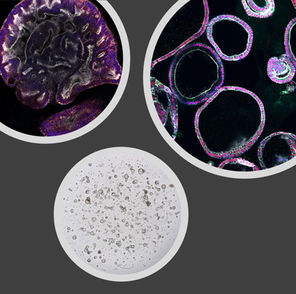Endometrial Biology
As one of the most dynamic and regenerative tissues in the adult body, the inner lining of the uterus or endometrium undergoes ~400 cycles of breakdown, growth, and scarless repair over the course of a woman’s lifetime. When perturbed, both reproductive and non-reproductive disorders can arise, including infertility, endometrial cancer, and endometriosis. Yet in spite of its central role in many human disorders and in reproduction, little is understood about the endometrium or its associated pathologies. In addition, current in vitro systems of the uterus leave room for improvement, having relied primarily on 2D cancer cell lines. While current endometrial organoids are more faithful models of their in vivo counterparts, they contain only glandular epithelium and thus lack the full cellular repertoire of this complex tissue. I have thus been developing and employing novel organotypic mouse and human organoid technologies to characterize endometrial physiology and dysfunction, as well as formation of the maternal-fetal interface. By combining in vitro organoid approaches with in vivo mouse models, my work on the endometrium addresses several directions in women's health and reproductive biology. Beyond these fields, investigating the endometrium as a unique and underexplored model system will reveal unprecendented insights into mammalian regeneration, wound healing, and adult stem cell biology.



